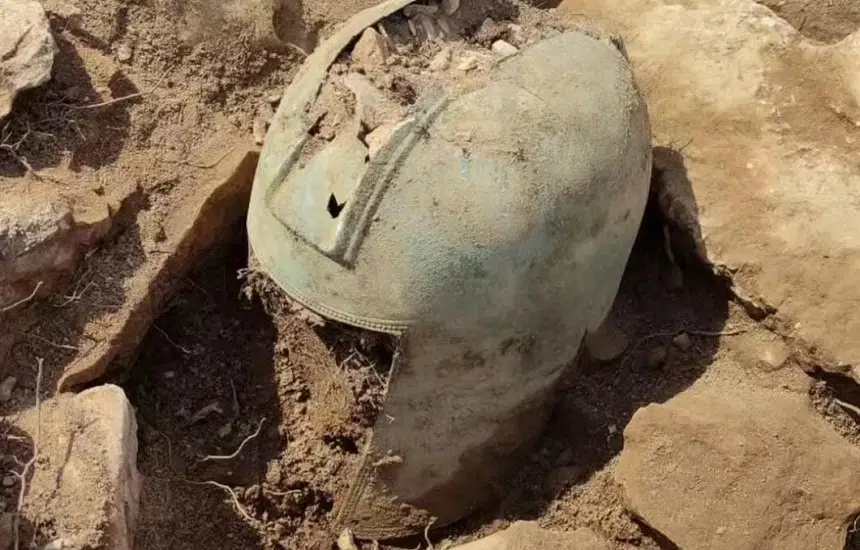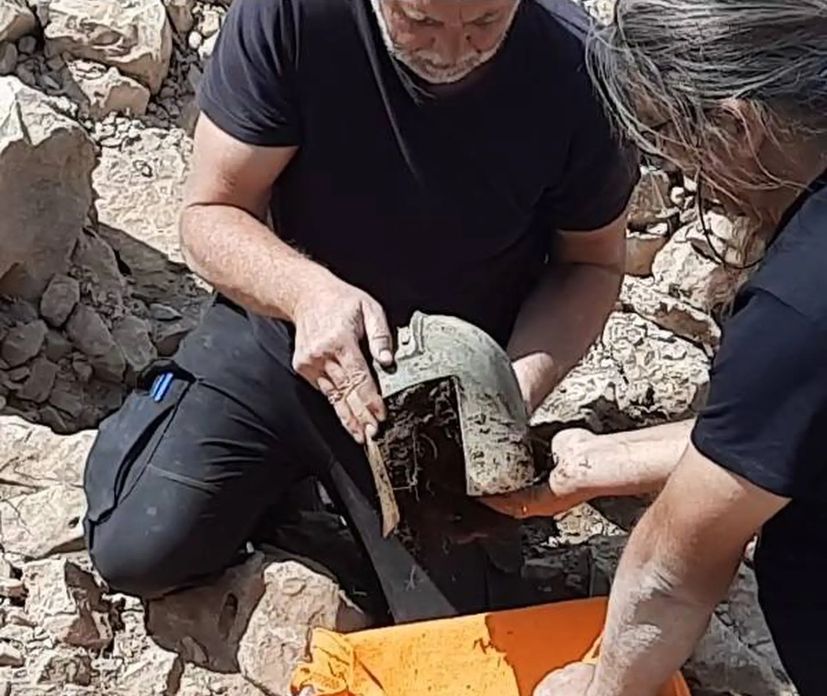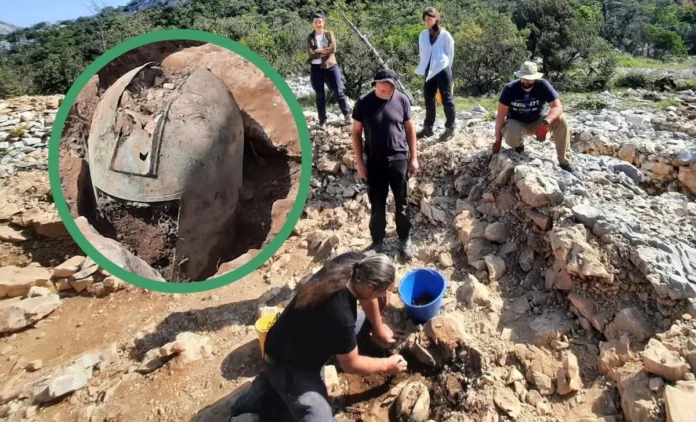Nestled along the breathtaking Pelješac Peninsula on the Adriatic coast of Croatia, the Gomile archaeological site has become a treasure trove for archaeologists, revealing the rich cultural heritage of the region. In a collaborative effort between the Dubrovnik Museums, the City Museum in Korčula, and the Dolenjski Museum, a team of researchers has been meticulously excavating this site since 2020, unearthing a remarkable collection of ancient artifacts that have the power to transport us back in time.
The Greco-Illyrian Helmet Discoveries

At the heart of this remarkable discovery are the Greco-Illyrian helmets that have been uncovered at the site. Led by Dr. Domagoj Perkić from the Archaeological Museum in Dubrovnik, the excavation team has made two significant finds that shed light on the warrior culture of the past.
The first helmet, discovered in a tomb alongside iron weaponry, is believed to have belonged to a member of the warrior elite, dating back to the 4th century BCE. This helmet, with its distinctive Greco-Illyrian design, is a testament to the military prowess and social status of its former owner. In contrast, the second helmet, found in a dry stone-walled addition to a grave and dating back to the 6th century BCE, may have been a votive offering, suggesting a different ritual significance.
Unveiling the Wealth of Grave Goods

The discovery of these helmets is just one aspect of the remarkable finds at the Gomile archaeological site. The excavations have yielded a plethora of stunning grave goods that provide a window into the daily lives and customs of the ancient inhabitants of the region.
Among the artifacts uncovered are 15 bronze and silver fibulae, intricate spiral bronze jewelry, bronze tweezers and needles, hundreds of glass and amber beads, a bronze diadem, and an impressive collection of over thirty vessels of Greek provenance, many of which were crafted in workshops from Attica and Italy.
The Significance of the Findings

Dr. Hrvoje Potrebica from the University of Zagreb’s Archaeology Department emphasizes the significance of finding two distinct helmet types at the same site, noting that they symbolize status and authority within ancient communities. These findings reinforce the Pelješac Peninsula’s status as a crucial archaeological zone along the eastern Adriatic coast, offering a glimpse into the rich cultural tapestry of the region.

The discovery of these Greco-Illyrian helmets and the wealth of accompanying grave goods at the Gomile archaeological site is a testament to the tireless efforts of the dedicated team of archaeologists. As the excavations continue, we can expect more remarkable insights into the life and times of the ancient inhabitants of the Pelješac Peninsula, further enriching our understanding of this captivating chapter in history.
These artifacts, carefully preserved and displayed at the Museum of Olympia, stand as a testament to the resilience of the human spirit and the enduring desire to uncover the secrets of the past. The Greco-Illyrian helmets, with their intricate designs and symbolic significance, serve as a poignant reminder of the rich cultural heritage that lies buried beneath the soil, waiting to be discovered and celebrated for generations to come.
